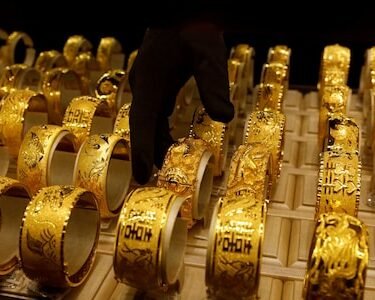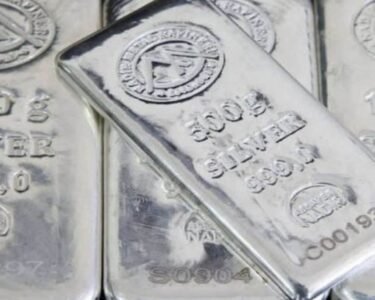By Charlie Garcia
Hi-ho silver: Industries need it; monetary rebels want it; and state governments are whispering about silver as money again
With shortages mounting and states re-legitimizing silver as money, this overlooked asset may be staging a comeback no one sees coming.
Silver doesn’t get headlines. It gets mug shots.
It’s gold’s (GC00) shifty cousin – the kind that disappears for a decade, then shows up unshaven with a smirk and a suitcase full of contraband. While gold enjoys polite applause at central bank banquets, silver (SI00) hangs out in Florida with preppers, pirates and guys who bury things in their backyard.
But here’s the twist: silver’s back in the game. The industrial world needs it. Monetary rebels want it. And state governments are whispering about silver as “money” again.
Silver’s historical pattern: Lag, then launch
Silver’s like that underachieving kid from your high school who flunks algebra, skips prom and then sells a startup to Google.
Most of the time, silver just sits there – tarnished, pouting and doing a convincing impression of a paperweight. But then something snaps, and it turns into a caffeinated ferret with a rocket strapped to its back.
— From 1974 to 1980, silver soared 1,363%, nearly doubling gold’s 720% gain.
— Between 2001 and 2008, silver surged 414%, again outperforming gold’s 292%.
— From 2006 to 2012, silver gained 321% compared with gold’s 167%.
Silver’s outperformance typically follows a predictable pattern: quiet accumulation, skepticism and then a breakout that catches markets by surprise. Fred Hickey, author of The High-Tech Strategist, puts it succinctly: “Silver can become a wild animal once it breaks out.”
Today’s setup for silver mirrors these historical patterns – perhaps on an even larger scale.
The structural deficit no one is talking about
In 2024, total silver demand exceeded total supply by 148 million ounces. This year, the shortfall is forecast at 118 million ounces.
You know things are out of whack when the world’s silver supply starts to look like your checking account – running a deficit four years in a row and still pretending everything’s fine.
In 2024, total silver demand exceeded total supply by 148 million ounces. This year, the shortfall is forecast at 118 million ounces.
Recycling has barely plugged this gap. Mines’ supply, responsible for over 80% of annual silver production, peaked in 2015 at 891 million ounces but has steadily declined, dropping to 820 million ounces by 2024- an 8% contraction.
The problem isn’t only supply and demand – it’s a lack of capital investment in mining itself. More than 70% of silver is mined as a byproduct of copper (HG00), gold, zinc and lead – industries seeing an investment drought.
Thanks to a cocktail of ESG guilt trips, regulatory red tape and investment firms with the backbone of a chocolate éclair, nobody wants to fund mining anymore. Which means that silver supply is being throttled.
Industrial demand is exploding – and won’t wait
Gold is content to be admired – tucked away in vaults. Silver? It works for a living.
Gold is content to be admired – tucked away in vaults, fondled by central bankers and hoarded like secrets in a Cold War bunker.
Silver? It works for a living.
In 2016, just over half of silver’s global supply went to industry. Today, it’s more than 80%. The rise of electronics, all things electric and solar panels has transformed silver from a monetary relic into a modern necessity.
And solar? That’s the game-changer. Photovoltaic demand has doubled in the past decade, pushing the demand for silver ever higher.
This isn’t the silver of your grandmother’s candlesticks. This is the silver of circuit boards and green revolutions – indispensable, irreplaceable and fabulously underpriced.
Incrementum AG’s influential In Gold We Trust report forecasts that by 2030, solar demand alone could triple from today’s levels. Even conservative scenarios imply consumption of nearly all available supply slack.
Critically, industrial demand is price-inelastic. Unlike investors, companies don’t stop ordering silver because it hits $30 or even $50. They buy what they need, when they need it, at whatever price.
Florida’s new silver standard – a wake-up call for investors
Last May 27, while most investors were busy watching interest rates and pretending to understand Federal Reserve Chair Jerome Powell’s press conference, Florida quietly lit a silver fuse. Gov. Ron DeSantis signed legislation declaring gold and silver coins legal tender and eliminating sales tax on them. The law takes effect on July 1, 2026 – giving the state time to write the rules, issue the guidance and brace for the effects.
But markets move on signals – not bureaucratic calendars – and that signal has already been sent. Florida is the first major state economy to re-legitimize precious metals as actual currency. Texas recently followed with a similar law. Not collectibles. Not commodities. But real money.
The implications are immediate. Investors take note, collectors become participants, and silver – long dismissed as a speculative relic – starts acting like currency again.
Several states are on similar paths. If even a few follow Florida and Texas, the result isn’t just a policy change – it’s a demand shock layered onto an already tight market. And that’s how silver stops being an overlooked asset and starts being a monetary insurgent.
The market is tight – and getting tighter
Since 2021, more than 800 million ounces of silver have drained from global inventories – the equivalent of almost 10 months of mine supply. Recycled silver, historically a buffer against rising prices, has become notably less responsive. Despite average silver prices increasing 46% over the past five years, recycling volumes rose just 18%, suggesting exhaustion of easily accessible scrap or that prices must surge higher to stimulate greater recycling.
The gold-to-silver ratio (GSR), a reliable valuation indicator, currently sits around 90 – 50% above its historical average of 60. The last two times the GSR reached these heights, silver soon staged enormous rallies. A simple mean-reversion scenario suggests silver prices would rise by more than 50% just to return to historical norms. If gold moves higher – as many analysts expect – the upside for silver compounds significantly.
Meanwhile, industry insiders aren’t waiting. A spate of mergers – such as Coeur Mining’s (CDE) $1.7 billion bid for Silvercrest, Pan American Silver’s (CA:PAAS) (PAAS) $2.1 billion move on MAG Silver, and First Majestic’s (CA:AG) (AG) acquisition of Gatos – signal smart money betting on silver’s imminent rise. When industry leaders consolidate aggressively, investors should take notice.
Silver’s ceiling could become its new floor
Silver’s all-time high is $50 – hit once in 1980 when the Hunt brothers tried to corner the market, and again in 2011 when the world briefly thought then-Federal Reserve Chair Ben Bernanke was going to print money until the sun burned out.
So yeah, $50 isn’t just within reach – it’s starting to look like the floor instead of the ceiling.
Gold will keep its crown and headlines. But silver? Silver’s putting on work boots, breaking out of its price prison and lighting a cigar made of ESG compliance reports. The real question now isn’t if silver explodes. It’s whether you’re still watching gold reruns when it does.
For serious investors, this moment calls not for fanfare, but for strategic positioning. A few recommendations:
1. Own physical silver: Start simple – U.S. Mint Silver Eagles are liquid, recognizable and tax-advantaged in some jurisdictions (especially under Florida’s new framework beginning July 1, 2026). Hold them outside the banking system, in secure storage or a home safe. Not everything needs to be an ETF.
2. For market exposure, create a silver barbell: The silver market is notoriously volatile. A smart approach uses a barbell strategy:
— On one end, exchange-traded funds, including iShares Silver Trust SLV or Sprott Physical Silver Trust PSLV offer liquid, low-cost exposure to the metal.
— On the other, select silver miners with high leverage to rising prices- names like First Majestic Silver or Pan American Silver. These stocks carry risk, but if silver does break out sustainably above $50, the equity upside could be multiples.
Charlie Garcia is founder and a managing partner of R360, a peer-to-peer organization for individuals and families with a net worth of $100 million or more. Garcia holds positions in gold and silver. Email him at charlie@R360Global.com.
Read: Gold and platinum are proven stock market predictors. Here’s what they’re saying now.
Plus: America just imported a mountain of gold. Here’s why that should scare you.
-Charlie Garcia
This content was created by MarketWatch, which is operated by Dow Jones & Co. MarketWatch is published independently from Dow Jones Newswires and The Wall Street Journal.
(END) Dow Jones Newswires
07-02-25 0750ET
Copyright (c) 2025 Dow Jones & Company, Inc.




